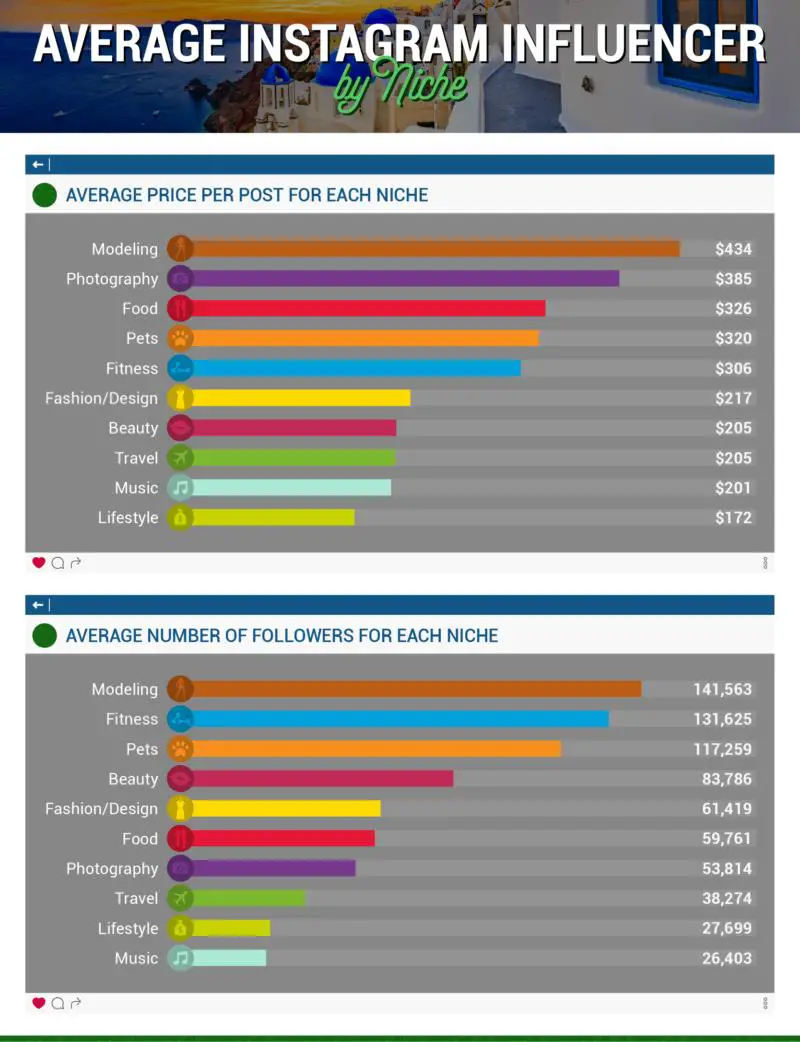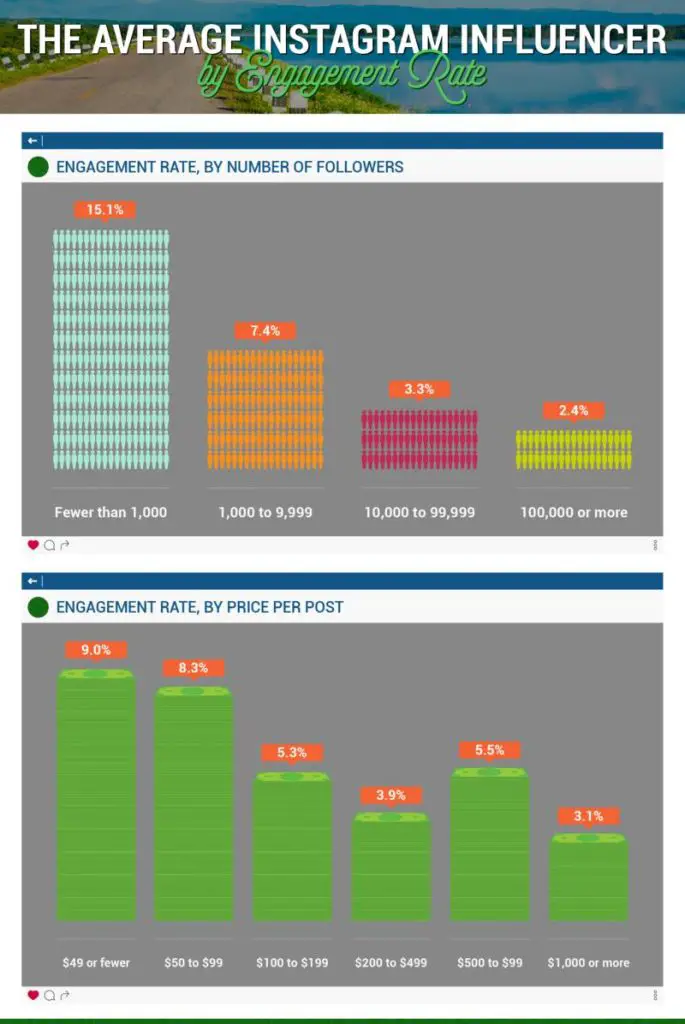Once upon a time, influencer marketing was a cost-effective way to reach new receptive audiences. But as more businesses knocked at the door, influencers started to charge more for featuring brands in their posts. So, prices surged. And chances are, they will continue to do so.
Working with an influencer today costs an average of $300 per job, however those with over 100,000 followers can earn as much as $800 for a single post, a new study by Influence.co reports.
Prices vary greatly not only on the audience size, but also from one niche to the other. For example, influencers in the Modeling, Photography or Food industries can earn nearly twice as much as those in Lifestyle or Music.

Discrepancies between niches are also reflected in terms of audience size. To be considered an influencer, only 26,403 followers are needed in the Music industry whilst only those with over 100,000 followers or more will be regarded as such in the Modeling, Fitness and Pets industries.
Nevertheless, marketers need to tailor their strategy depending on the KPIs of their campaigns. If the goal is to generate product or service exposure, then yes, marketers willing to work with influential users will want to look at how many Followers these influencers have. But if it’s engagement that marketers are after, they will want to look to work with so-called ‘micro’ influencers – users who have a smaller following, but who have built tight bonds with their community.

According to findings by Influence.co, the bigger the community, the less the engagement. Instagram users with fewer than 1,000 followers get an average of 15.1% Engagement Rate, while those with over 100,000 followers or more (a.k.a the big players) only get 2.4% – that’s six times less engagement!
Commenting on these stats, Jellyfish’s associate social media director Hannah Dempsey said:
[quote]For years, influencer marketing has been about finding people with the biggest audience size to reach the most amount of people. Now, we’re doing the reverse, we’re finding out more about the audience we want to target and then seeing who influences them. [/quote]
She added:
[quote] Think of influencer marketing like throwing stones in a pond. If you throw a big stone (huge influencer – big paycheck) you create a huge splash and one ripple. But if you throw lots of little stones (micro-influencers) you create several splashes and ripples, some that overlap but the ripple effect covers a bigger area. We’re also in time where people are becoming more susceptible of big influencer campaigns. If it’s someone you follow on Instagram because you love their photos, you may not realise that they have been paid to promote a product, so it feels more organic to you, making you more likely to engage. [/quote]
Influencer marketing is likely to reach its zenith over the coming months. If marketers want to jump on the bandwagon successfully, they will need to identify the people they want to talk to, and more importantly, find out who influence them. Also, they need to find out which of those influencers fit right in with the campaign and KPIs that they have laid out.
Throwing money at just any influencer and waiting patiently for leads to come in, is a failed tactic. Marketers! Be smarter than that!
[box]Read more: Are Micro Influencers The Future of Influencer Marketing?[/box]
